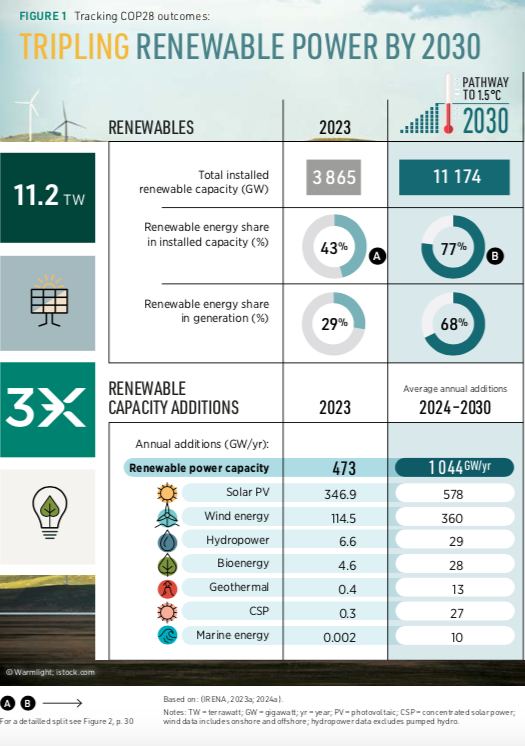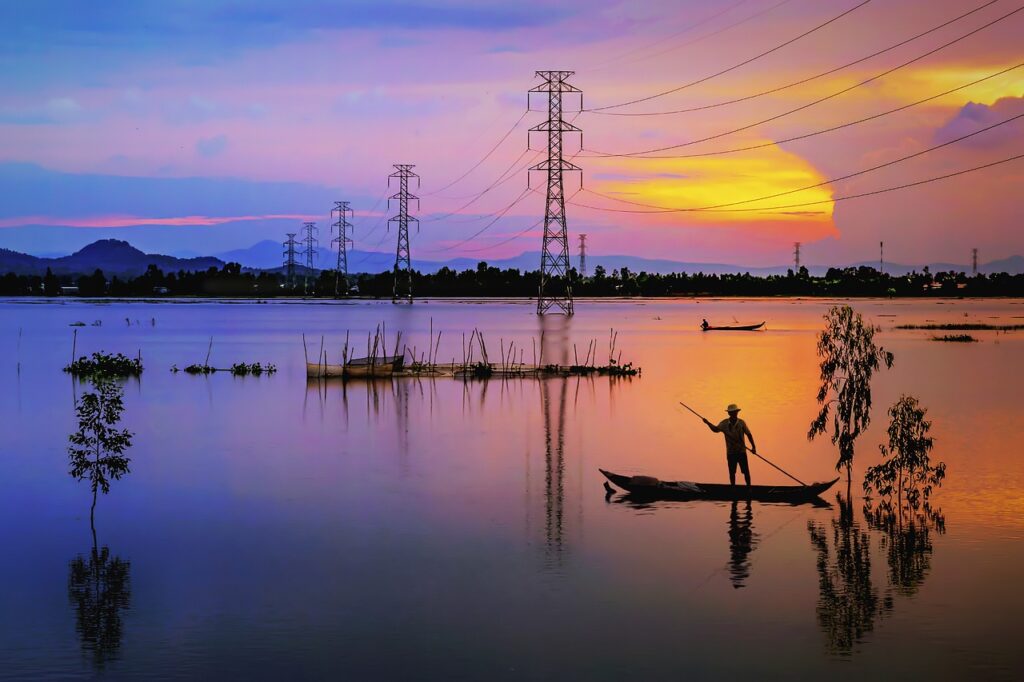Meeting the UAE Consensus: The world needs three times more wind farms and 35 times more geothermal energy
A tripling of renewable energy capacity to 11.2 TW requires an average annual growth of 1,044 GW from 2024 to 2030, representing an annual growth rate of 16.4%, one of the conclusions of the report “Meeting the UAE Consensus: Tracking Progress Toward Tripling Renewable Energy Capacity and Doubling Energy Efficiency by 2030”.
The first in a series of annual publications requested by the COP28 presidency notes that investments in renewable energy capacity reached a record USD 570 billion in 2023, but are still far short of the required USD 1.5 trillion each year between 2024 and 2030.
Annual investment in solar PV are on track to reach the USD 397 billion required each year by 2030 to achieve the tripling goal, but other technologies remain underfunded, it said. In 2023, 84% of investments in renewable energy capacities were realized in China, the EU and the USA; Brazil and India accounted for just over 6%, while investments in Africa fell by 47% between 2022 and 2023.
Only solar at a satisfactory level
As stated, in 2023, 473 GW of new renewable energy capacity was added – 346.9 GW of solar; 114.5 GW of wind energy (103.9 GW onshore); 6.6 GW of hydropower and 5.2 GW of bioenergy, geothermal energy, concentrated solar power (CSP) and marine energy, combined.
Except for solar PV, capacity additions for all renewable energy technologies are below the level required to meet the tripling target. Compared to 2023 capacity, the world needs three times as many onshore wind turbines; six times more offshore wind farms and bioenergy and 35 times more geothermal energy.

Source: Report “Meeting the UAE Consensus”
Only 1.6% of global capacity installed in Africa
The geographical deployment of renewable energy remains very uneven. Almost 85% of the global capacity is installed in Asia, Europe and North America, and only 1.6% in Africa. Current national plans and targets will provide only half of the required growth in renewable energy by 2030, reaching 7.4 TW, resulting in a deficit of 34% (3.8 TW) by 2030, the report warns.
As stated, renewable energy sources are the cheapest option for new electricity in almost every country in the world. In 2023, 81% (382 GW) of new RES capacity produces cheaper electricity compared to fossil fuel-based capacity. Stationary battery storage costs have fallen by 89% since 2010.
About the report
The consensus from the UAE, which was reached at last year’s COP 28 in Dubai, was adopted by 198 countries, and includes a number of goals, including tripling the capacity of renewable energy sources and doubling energy efficiency by 2030.
The International Renewable Energy Agency IRENA has been appointed as the competent agency to monitor and report on these goals every year until 2030. The report represents the first edition of the series and this year brings together IRENA, the UAE Consensus, i.e. the COP28 Presidency, the COP29 Presidency, the Global Alliance for Renewable Energy Energy (GRA), the Federal Government of Brazil and the Ministry of Energy of Azerbaijan. The report particularly emphasized the role of RES in the rapid and drastic reduction of global greenhouse gas emissions, which is key to complying with the goals of limiting global warming to 1.5 °C. This report calls on signatory countries to actively engage in efforts to triple the global capacity of renewable sources and double the average annual rate of improvement in energy efficiency by 2030.
You can view the full report below:
Photo: Pixabay/Văn Long Bùi


